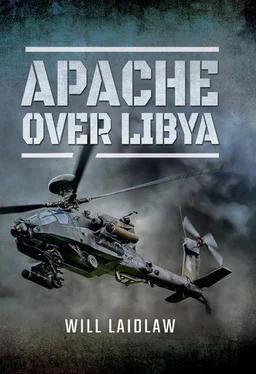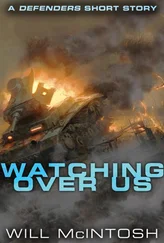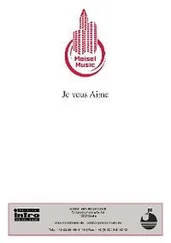I called to Mark, ‘No joy, can’t see the targets. Regroup feet-wet.’
We needed to get away from the barracks and make a new plan, having now flown in three times and given away the surprise.
Mark came back: ‘Try Nomad, see if he’ll buddy-lase it for us.’
The theory was that we could fire our Hellfire and the Pred could guide it into the target with his laser. We just needed to be careful that the missile-seeker was locked on, then Nomad owned the rest. Nomad was directly above the barracks, way up high, and he could see everything; we were low-level and were never going to get the right line of sight.
I got on the net to Nomad: ‘How about your laser, my missile? If you can, could you get permission for the strike too?’
We had never practised this, it hadn’t been briefed or authorized. I had no idea if it would work.
Nomad was quick to respond: ‘Prodigy, yes CAOC say it is a go; we have permission. You have my code, call for laser on and count down to missile release. I’ll do the rest.’
A man in Nevada, who was probably coming to the end of his shift, about to head home, pick up the kids and some groceries, was now about to guide a load of Hellfire into some tanks on the other side of the planet.
Mark and Charlie went in first and we followed. Four minutes later, four T-72 Main Battle Tanks were burning, out of action in the woods. We turned north and were back on the flight deck an hour and a half after we’d left.
The next couple of weeks saw us running in on several VCPs, disrupting the regime’s grip on the main roads west of Tripoli. We launched a four-ship mission to break up control of the roads in and out of Zuwara and Az-Zawiyah. Nine Hellfire and 200 rounds of 30mm cleared the VCPs. A week later the regime had rebuilt them. Smelling an ambush, we launched again, this time coming in from the desert. Jay and Big Shippers noticed heavy weapons all pointing out to sea – it certainly looked like a ‘come-on’ designed to lure us back – but together with JB and Reuben they put eleven Hellfire and 500 rounds of 30mm into the VCPs and weapon systems. Savvy planning had brought the patrol in from an unexpected direction and rapid high-tempo firing thrashed the ambush before it could be sprung. The regime didn’t go for a third rebuild.
On the same day I received a letter from the Guild of Air Pilots and Air Navigators informing me that 656 Squadron Group had been awarded the Master’s Commendation for their development of the Apache’s maritime capability. Recognition while at war! This was great news. Now renamed the Honourable Company of Air Pilots, the Guild are global sponsors of everything aviation and are held in the highest esteem by aviation professionals. To receive an award from them was indeed a top honour. I knew who’d written the citation and went to thank the CO.
We were back on the up. No one had launched a surface-to-air missile at us for two weeks and the FLIR image was conclusive – pro-Gad wanted to run away and live. Each time an Apache crossed the coast the scouting screen ran for cover. Finally, at the six-week point, the message was getting through – don’t fight us, because we’ll fight you back harder and we’ll win.
Chapter 10
The Week of the 27
In mid-July we went back to the Zlitan area. This time we weren’t going to mix it with BM21s, ZSU 23-4s or the troops on the front line. This time we were going to break the back of the brigade by convincing Khamis that there was nowhere safe to rest, store equipment or manoeuvre in depth. This time we would strike his support areas, where 32 Brigade was spread 20 miles in depth from Al Khums to Zlitan with large numbers of vehicles and troops using requisitioned buildings as well as government premises. Their task was to re-supply, reinforce and rotate with troops on the front line, a further 15 miles to the east. These troops were busy fighting the rebels and besieging Misrata. Pro-Gad had shelled, burned and razed the city, terrorizing her population with artillery and direct fighting since February. The FLF had edged the front line west towards Zlitan, but pro-Gad could still dominate the area. Our task was to disrupt pro-Gad and, in doing so, create opportunities for the rebels.
The first mission was to destroy a set of buildings just five miles west of Zlitan. They were only two miles south of the beach. On the map it looked straightforward – come in off the sea, identify the targets, strike, return to Mother. We would probably only need to be feet-dry for a matter of minutes. The reality proved not to be so simple. The ground between the target area and the coast looked good for a SAMbush. There were also other areas of military interest which could become targets for future missions. We didn’t want to be circling above this, inadvertently telegraphing our future intent or inviting a fight. Flying around conducting attack profiles seemed unnecessarily risky. If we had to fly in that area we would want to do so only once, low and fast, gun actioned, ready to defend ourselves. So we chose a long navigation track, entering 30 miles to the north, flying inland and then sweeping south and east before taking on the target from the south. This unexpected approach would give the impression we had come from far inland. Of course this came with its own risk. Would we give ourselves away with a long land track? Would we be engaged on the beach on the way in? The long land track gave no choice but to undertake the short escape route back to Mother via the low, fast, gun-actioned dash through SAMbush territory at the end of the mission. We would be low on ammunition and fuel, leaving very little margin for the fight and survival. Being behind enemy lines, possibly battle-damaged and low on essentials, is a difficult plan to sign up to. But as we considered the options it was clear that the land track, attack from the south and dash offered the best chance of success for this mission, as well as following our modus operandi of surprise and firepower.
Mark and John had recommended the route to me, highlighting the pros and cons. The launch was a long way north of the target and we would arrive at the coast near Al Khums, where Gaddafi’s SF were based. There would be a long land track through the hinterland and across the desert. Fuel would be tight, but surprise would be on our side. Shooting from the south gave us the best chance of a quick and devastating attack. We discussed the various points of entry and exit as well as the likely threats on each leg of the route.
These were two experienced operators with well over 1,000 hours flying in Afghanistan between them. More important than that, they were crafty, independent thinkers. I could expect them to consider all the possibilities and present a plan that embraced the unorthodox while making the most of the aircraft’s capabilities. To continue to survive and win on this operation we had to be agile planners. A well considered plan would help us cope with the combat reality. This gave us the best chance of making the right decisions on the spot in those chaotic combat moments when risks become real and the enemy makes a determined attempt on your life. Surprise, speed, firepower and darkness were top of our planning needs. With a team like this, all I had to concentrate on was the target set and how to attack it.
On mission day, when it came to reviewing the route in the afternoon we spent a long time poring over the satellite imagery of the land track. Maps of Libya were adequate around the cities, but not so accurate in the hinterland or the desert. Among the hazards we had to be sure of were the various wires, electrical and telephone. Almost all of Libya’s industrial infrastructure was on the coast, and that meant massive, high-tension, helicopter-catching wires were everywhere but seldom marked on the map. We would be flying low-level at night, and those wires presented a very real threat to our flight safety. Adding that to the fact that we would spend almost the entire sortie over enemy territory at around 100ft, I knew I had careful planning and risk-mitigation to consider.
Читать дальше












